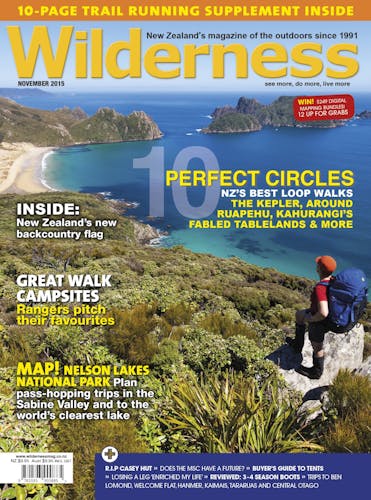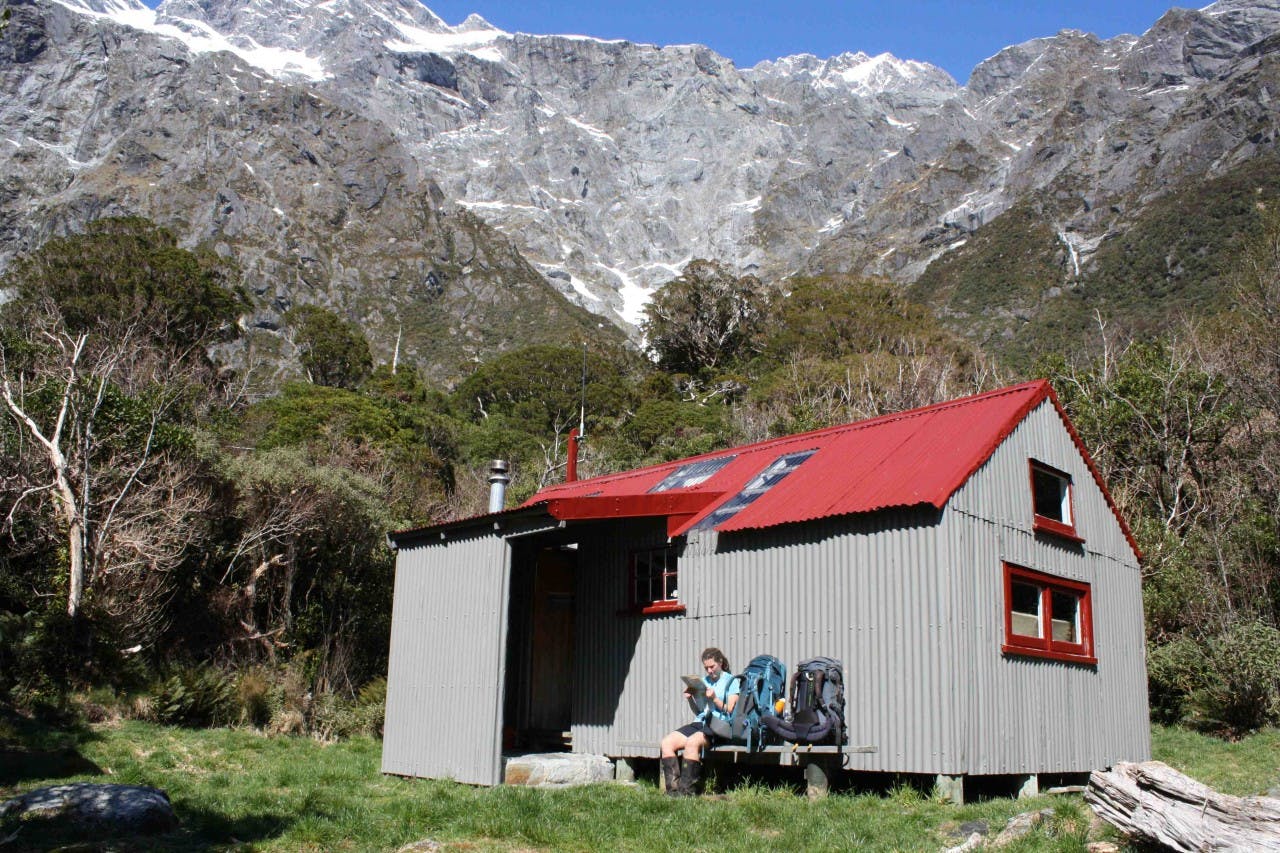- Area
- Westland National Park
- Distance
- 23.2km one-way
- Total Ascent
- 1312m
- Time
- 6-8hr. Road end to Architect Creek Hut, 2hr; Architect Creek Hut to Welcome Flat Hut, 3hr; Welcome Flat Hut to Douglas Rock Hut, 3hr
- Grade
- Easy/Moderate
- Accom.
- Architect Creek Hut, two bunks; Welcome Flat Hut, 31 bunks; Douglas Rock Hut eight bunks
- Access
- SH26, 26km south of Fox Glacier
- Map
- BX 14, BX15
- GPX File
- Douglas Rock Hut.Westland National Park (gpx, yo 66 KB)
- Your device does not support GPX files. Please try a different device.
Douglas Rock Hut, Westland National Park
A fat anticyclone hanging over the country provided the perfect opportunity for a spring jaunt into the Copland Valley. We figured it was late enough in the season that the temperatures would be mild, yet early enough to avoid the stifling crowds of summer.
The track began by following the true right of the Karangarua River, sidling through dewy flats and sun-splintered podocarp forest. After an hour we reached the confluence of the Karangarua and Copland rivers, where the track dropped off a terrace to the schist-studded bank of the Copland Rive, which was a beautiful translucent turquoise, with plenty of pools that would make excellent swimming holes in summer.
We followed the river along gently undulating terrain before stopping for lunch at Architect Creek Hut, a welcome harbour from the sandfly storm. From Architect Creek, the track climbed to a rocky spur for the only incline of the day. It’s a well-graded, gentle climb that still allowed us to notice the myriad bird life: the bush was alive with bellbirds, kereru, tomtits, and fantails. Through the trees we caught glimpses of the formidable Sierra Range, garlanded with pristine snow.
After crossing the swingbridge at Shiels Creek, we dropped down to Welcome Flat Hut; a sophisticated two-storey affair with gabled windows and solar panels. The hut was originally built slightly down valley in 1986, but one year later a landslide demolished the eastern side of the building, prompting a relocation to its current, safer, site. Of course, the hot springs are the greatest draw card of Welcome Flat Hut – basting ourselves in the hot, odourless water under a tranquil night sky was heavenly.
The following morning revealed another flawless blue sky as we crossed to the true left of the Copland River to continue on to Douglas Rock Hut. The track meandered along Welcome Flat, passing through open river terraces and patches of stunted bush. Active slip zones, alluvial flotsam and eroding peaks all served as constant reminders of how dynamic this landscape is.
After crossing Scott Creek, the valley narrowed considerably and we began weaving up and over small creeks and rocky inclines. The Copland River was a tumultuous cascade of white froth and giant boulders crashing below us. As in the lower valley, the bird life was phenomenal – testament to more than 30 years of possum control in the valley.
We crossed Tekano Stream to reach the hut – a fantastic eight-bunker with a cheerful maroon roof, situated in a forest glade at the edge of the bushline. Unusually, the hut also possesses a VHF radio, which can be used to tune into the Haast base weather report at 4pm. Despite being sited on an avalanche path, the hut placement is sensational, with stunning views of the Aurora and Navigator ranges. Southern rata embroidered the bush, while distant snow glinted in the sunlight like freshly whipped albumen. It was too late in the day for a trip to Copland Pass, so we spent a leisurely afternoon at the hut, getting acquainted with the resident tomtit and listening to avalanches being liberated up valley.
The peaks were buried in soft rain as we started walking back to the car park the next morning, but it did nothing to diminish my view that the Copland must be one of the most spectacular valleys in Westland.







